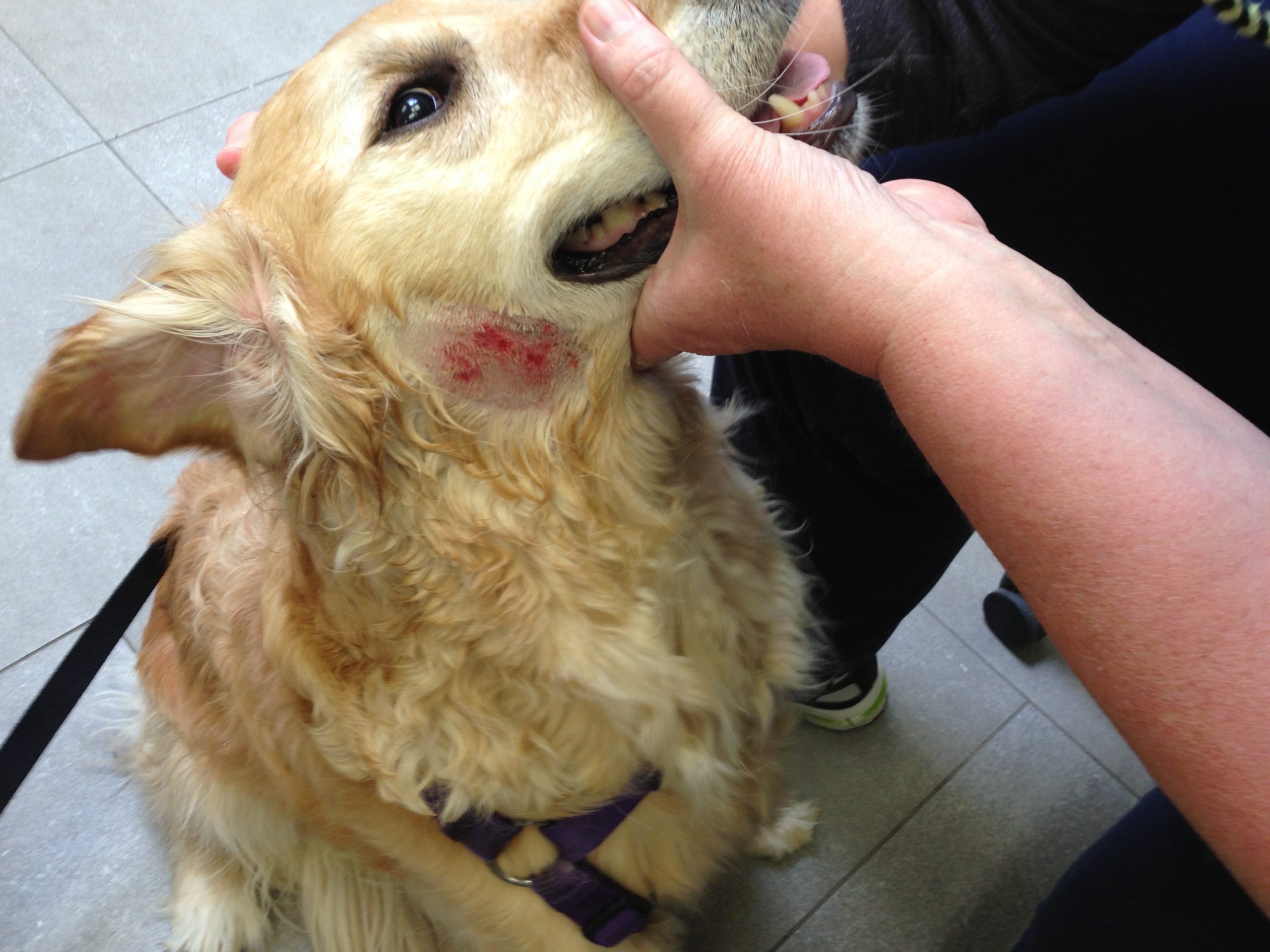A hot spot on a dog is also known as pyotramatic or moist dermatitis and it involves an area of skin on the dog, which has become inflamed and infected. The affected area of skin will often ooze and be moist. These hotspots will become worse for your dog with continuous itching, licking and sometimes even chewing which is why it is extremely important to get the hot spot treated as soon as you notice a problem.
A big factor in the development of hot spots on dogs is the presence of moisture, which is why a lot of vets refer to it as moist eczema, but moisture isn’t the only factor in hot spots on dogs.
Hot Spot causes
Anything that generates itchiness of the dog’s skin can lead to the development of a hot spot. Fleas to food allergies to environmental allergies – like grass, weeds, dust mites, etc.) and insect bites can cause a hot spot. A bacterial infection of the skin which is typically caused by staph will develop by taking advantage of the damaged inflamed skin. That infection is often deep in the dog’s skin and along with the moist oozing appearance there’s usually an odor as well.
Hot Spot Treatments
The first goal of treatment is to clear the bacterial infection, to relieve the itching and the pain and to also try and identify what caused the initial problem. Once you can figure out what caused the hot spot, you can take measures to avoid another one from forming. And if the hot spot itself isn’t that bad you can help treat your dog yourself with some assistance from your vet.
- The first step would be to trim around the infected area with some clippers. If it’s a big area, you should shave it.
- Next, clean the area with astringent or an antiseptic spray. These sprays, creams or ointments will kill bacteria and also help with pain, itching and inflammation.
- Prevent your dog from biting, licking or scratching the hot spot. Placing an Elizabethan collar – otherwise known as a plastic cone – around your dog’s neck can be an excellent tool to keep him/her from biting and licking at it.
- Make sure you keep an eye on the hot spot to make sure it continues to heal and that it doesn’t worsen or spread.
- Your vet will prescribe topical sprays and sometimes even oral antibiotic to help treat the hot spot.
Another thing to know about hot spots on dogs is that they seem to be more prevalent during the summer months though they can occur at any time. It is important to keep your dog well groomed during warmer weather and if your dog has a thick coat sometimes it’s better to get them groomed and shaved for the summer. It can prevent some of the moisture from building on their skin, which helps exacerbate hot spots.
The good thing is that hot spots are both treatable and preventable. You can get more information on how to do so by visiting Dr. Rose’s Remedies. There are a variety of treatments that can potentially work when it comes to taking care of hot spots on dogs.
Stacey Gotsulias writes for a variety of publications.































No Comments
Leave a comment Cancel